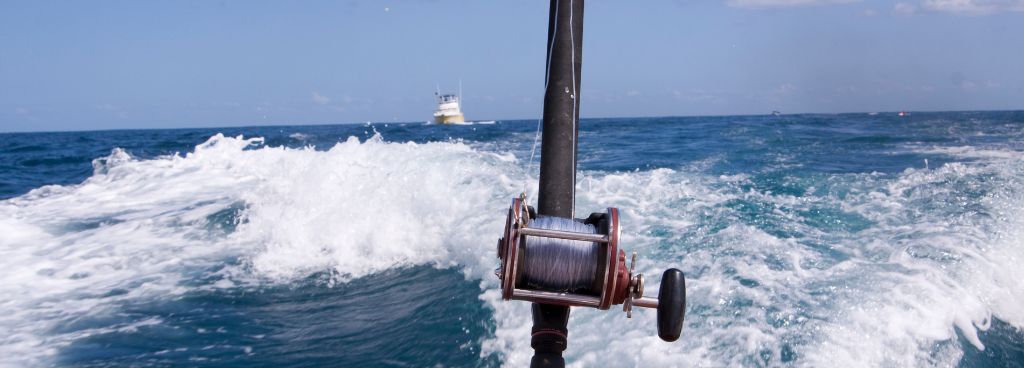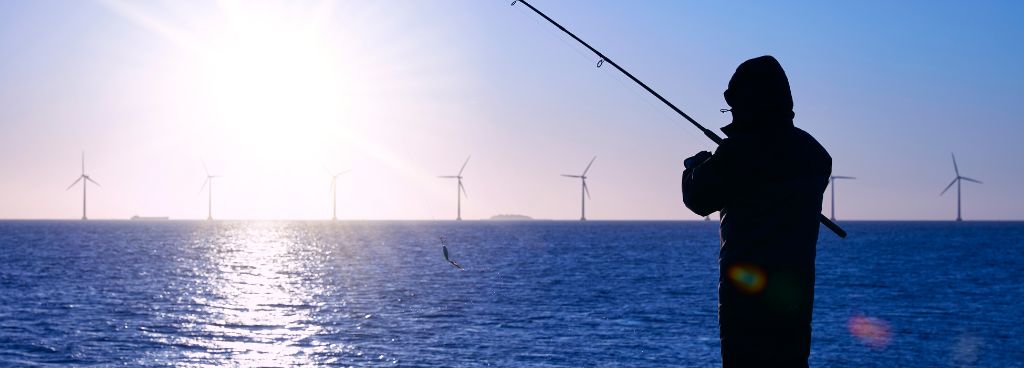Stories Worth Reeling In...
Last Updated on October 6, 2023
Hey there, fellow fishing enthusiasts! Are you ready to dive into the exhilarating world of fishing? I can practically feel the excitement in the air! There’s nothing quite like the thrill of casting your line, feeling the tug, and reeling in that prized catch.
Today, we’re going to explore two fascinating fishing realms: inshore and offshore fishing. These two types of fishing have gained immense popularity among anglers worldwide, each offering its own unique set of experiences and challenges. So, grab your gear, hop aboard, and let’s set sail on this informative journey!
Table of Contents
One of the most thrilling aspects of offshore fishing is the pursuit of trophy-worthy game fish. These majestic creatures are known for their size, strength, and the adrenaline-pumping battles they engage in when hooked.
From the acrobatic leaps of the mighty sailfish to the raw power of a marlin’s run, every encounter is an adrenaline-fueled rush that will leave you in awe. Offshore fishing provides an unrivaled sense of achievement as you challenge yourself to reel in these titans of the deep.

Now, let’s talk seasons and prime times for offshore fishing. Depending on your location and target species, there are optimal times of the year when the action is at its peak.
During certain seasons, migratory patterns bring forth an abundance of fish, creating an angler’s paradise. For example, if you’re targeting the legendary yellowfin tuna, you might find them more plentiful during the summer months.
Of course, no offshore adventure is complete without the right gear and equipment. Sturdy fishing rods, reliable reels, and lines with enough strength to handle powerful fights are essential.
Having access to navigational tools, like fish finders and GPS devices, can significantly increase your chances of locating the hotspots where the big fish lurk. Safety equipment, such as life jackets and emergency gear, should also be on your checklist to ensure a smooth and secure offshore experience.
When it comes to inshore fishing, we have a diverse cast of fish species that make these coastal waters their home.
From the elusive redfish to the cunning snook, the inshore environment teems with an array of exciting targets. Whether you prefer the thrill of battling with the explosive strikes of a spotted sea trout or the cunning nature of a crafty flounder, there’s a fish species to cater to every angler’s taste.
One of the most significant advantages of inshore fishing is its accessibility. Unlike offshore adventures that require venturing far from land, inshore fishing allows anglers to enjoy the sport without venturing too far from the comforts of the coastline.
Plus, the beauty of inshore fishing is that it can be enjoyed year-round, providing action regardless of the season. So, whether it’s the thrill of a summer flounder run or the exhilaration of winter trout fishing, there’s always a chance to wet your lines and land that trophy catch.

Now, let’s talk about the techniques and gear that shine in the world of inshore fishing. One popular technique is the art of casting artificial lures, such as topwater plugs or soft plastics, to entice the fish into striking. This approach requires finesse and skill, as you mimic the movements of prey to trigger the predator’s instinct.
Another technique often employed is live bait fishing, utilizing live shrimp or baitfish to entice the hungry fish. It’s a tried and true method that can bring remarkable success.
As for gear, a reliable medium-action spinning rod paired with a sturdy reel is the go-to choice for many inshore anglers. This combination provides the versatility and strength needed to handle a variety of fish species and fishing techniques.
A braided fishing line is a popular choice due to its strength and sensitivity, allowing you to feel even the slightest nibble. Don’t forget to stock up on an assortment of hooks, sinkers, and other tackle essentials that suit your preferred fishing style.
To begin, understand that “inshore fishing” refers to saltwater fishing in rather shallow water. In most situations, this entails fishing within nine miles of the shoreline (which includes bays, estuaries, channels, and passes).
Inshore fishing often involves casting from the shoreline, piers, or small boats. Common techniques include baitcasting, spinning, and fly fishing.
Smaller boats like flats skiffs, kayaks, and bay boats are well-suited for inshore fishing due to their ability to navigate shallow waters.
Offshore fishing can be more physically demanding due to larger waves and longer travel distances. It may also require more experience and specialized gear.
I encourage you, our fellow anglers, to explore both inshore and offshore fishing to broaden your angling horizons. Each style brings its own unique thrills and challenges, providing a diverse range of experiences that will keep your passion for fishing alive and thriving.
Now, it’s time to pack your gear, prepare your rods, and set sail on the seas of adventure. Explore the richness of inshore fishing and the excitement of offshore expeditions. Let the lure of the waters guide you and the thrill of the chase ignite your passion. Tight lines and happy fishing!